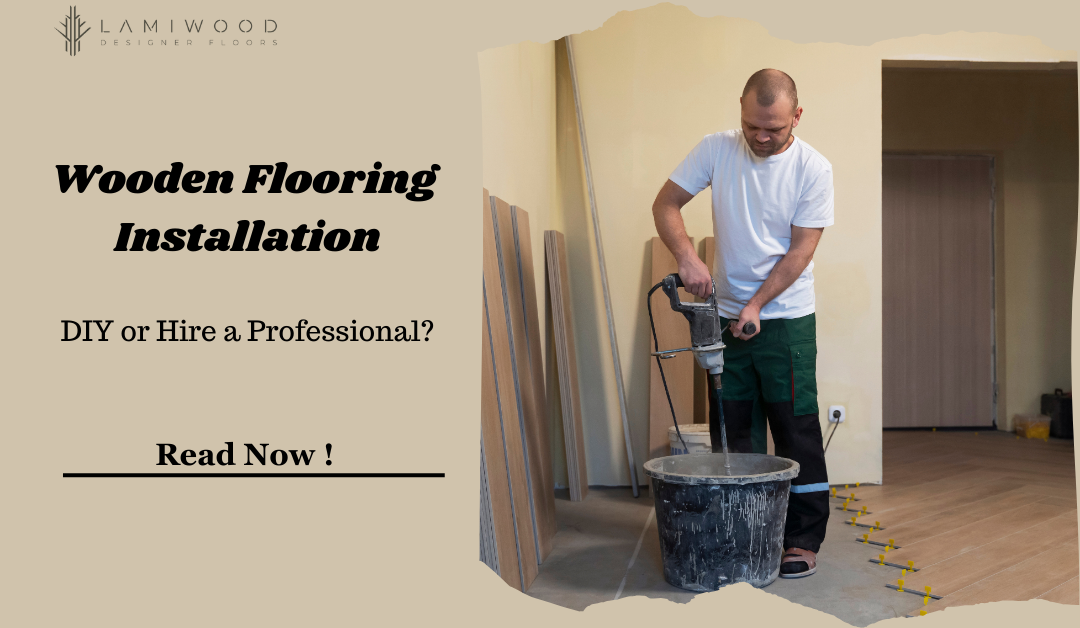When it comes to installing wooden flooring, one of the most significant decisions homeowners face is whether to take on the project themselves or hire a professional. While DIY installation can be a cost-effective option, it’s essential to consider various factors before making a decision. Let’s explore the pros and cons of both DIY and professional wooden flooring installation to help you determine the best approach for your home renovation project.
Factors to Consider
Before deciding between DIY and professional installation, consider the following factors:
- Project scope: The size of your flooring project can significantly impact your decision. Smaller rooms or areas may be more manageable for a DIY installation, while larger projects may require professional expertise.
- Skill level: Installing wooden flooring requires a certain level of skill and experience. If you’re handy with tools and have previous DIY experience, you may feel more comfortable tackling the project yourself.
- Time constraints: DIY installation can be time-consuming, especially if you’re working alone or have limited experience. If you have a tight timeline for your renovation project, hiring a professional may be the more efficient option.
- Budget: One of the primary reasons homeowners choose DIY installation is to save money on labor costs. However, it’s essential to factor in the cost of tools, materials, and potential mistakes that may require professional intervention.
DIY wooden Flooring Installation
Pros:
- Cost savings: By installing wooden flooring yourself, you can save a significant amount on labor costs, which can be particularly helpful if you’re working with a tight budget.
- Flexibility: DIY installation allows you to work at your own pace and schedule, which can be beneficial if you have other commitments or need to work around family life.
- Sense of accomplishment: Successfully installing your wooden flooring can provide a great sense of pride and satisfaction in your home renovation project.
Cons:
- Time-consuming: Installing wooden flooring can be a lengthy process, especially if you’re new to the task or working alone.
- Potential for mistakes: Without proper experience or knowledge, DIY installation can lead to costly mistakes that may require professional intervention to fix.
- Lack of warranty: Many wooden flooring manufacturers offer warranties that are contingent upon professional installation. By opting for DIY installation, you may void the warranty and be responsible for any issues that arise.
Professional wooden Flooring Installation
Pros:
- Expertise: Professional installers have the knowledge, skills, and experience to ensure your wooden flooring is installed correctly and efficiently.
- Time savings: Hiring a professional team can significantly reduce the time required to complete your flooring project, allowing you to enjoy your new floors sooner.
- Warranty protection: Professional installation often comes with a labor warranty, providing added peace of mind and protection for your investment.
Cons:
- Higher upfront costs: Hiring a professional installer will add labor costs to your flooring project, which can be a significant consideration for those on a tight budget.
- Scheduling constraints: Working with a professional installer means adhering to their schedule, which may not always align with your preferred timeline.
Making Your Decision
When deciding between DIY and professional wooden flooring installation, carefully consider your skill level, available time, budget, and the scope of your project. If you’re confident in your abilities, have the necessary tools, and are working with a smaller space, DIY installation can be a rewarding and cost-effective option. However, if you’re tackling a larger project, have limited experience, or want to ensure the best possible results, hiring a professional installer may be the wisest choice.
Conclusion
Whether you choose to install your wooden flooring yourself or hire a professional, the end goal is to achieve a beautiful, long-lasting, and adorable floor that enhances your living space. By carefully weighing the pros and cons of each option and considering your unique circumstances, you can make an informed decision that best suits your needs and ensures the success of your home renovation project.

